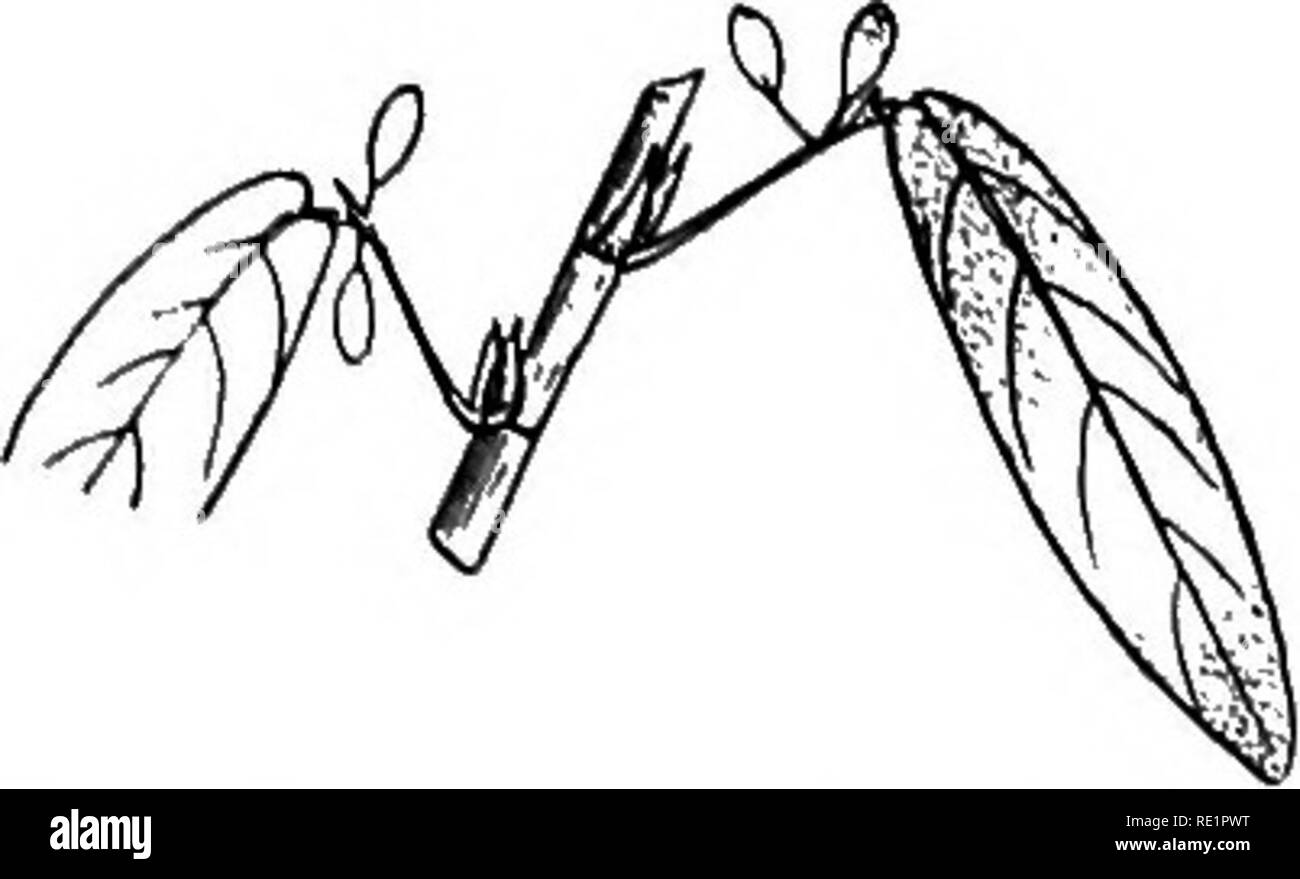. A manual of Indian botany. Botany. CALYCIFLOR.^ 207 {Crotolaria j'uncea) are used in making ropes, &c., which are more lasting than those made of pat or Jute. The well-known dye, indigo, is yielded by nil {Tndigo- fera sumatrana). The valuable timber shishoo is obtained from the shishoo tree {Dalbergia Sissoo). The stems of shola {^schynomene aspera), a water- plant, are used as a substitute for cork, as floats for fishermen, and for various ornamental purposes; the leaves of it are somewhat sensitive. The leaves of Smithia ciliata, a common herb of the Pareshnath Hills, are also sensiti

Image details
Contributor:
The Book Worm / Alamy Stock PhotoImage ID:
RE1PWTFile size:
7.2 MB (148.5 KB Compressed download)Releases:
Model - no | Property - noDo I need a release?Dimensions:
2029 x 1232 px | 34.4 x 20.9 cm | 13.5 x 8.2 inches | 150dpiMore information:
This image is a public domain image, which means either that copyright has expired in the image or the copyright holder has waived their copyright. Alamy charges you a fee for access to the high resolution copy of the image.
This image could have imperfections as it’s either historical or reportage.
. A manual of Indian botany. Botany. CALYCIFLOR.^ 207 {Crotolaria j'uncea) are used in making ropes, &c., which are more lasting than those made of pat or Jute. The well-known dye, indigo, is yielded by nil {Tndigo- fera sumatrana). The valuable timber shishoo is obtained from the shishoo tree {Dalbergia Sissoo). The stems of shola {^schynomene aspera), a water- plant, are used as a substitute for cork, as floats for fishermen, and for various ornamental purposes; the leaves of it are somewhat sensitive. The leaves of Smithia ciliata, a common herb of the Pareshnath Hills, are also sensitive. The red seeds of kunch {Adrus precatorius) are used as small weights by jewellers. The flowers of palte-madar {Ery- thrina indica), apara-jita {Cli- toria 76r«fl^e«!), bak-phul {Ses- bania grandiflora), and palash (Butea frOndOSa) are very p;g. , , 8.—Telegraph Plant or Gora showy; the first and third are chand(Z)^s«.<, rfmm«, .ra«ir) ornithophilous or bird-pollin- ated and the last entomophilous. The first is also a good example of a tropophyte. The automatic or nutation movement of the two lateral leaflets of the trifoliate leaves of the Telegraph-plant, ban-chandal or gora-chand {Desmodium gyrans) (fig. 178), a com- mon weed in waste shady places, is a very interesting phenomenon; alkushi (Mticunapruriens) is a climber which is dreaded on account of the stinging hairs which cover its pods. M. monosperma is also a kind of alkushi of East Bengal (fig. 179)- Sub-order 2. C^salpimece.—Flowers slightly irre- gular. Petals 5, unequal, imbricate, the upper one inside and enclosed by the others. Stamens usually 10, free, some often abortive. The common plants are sondal or Indian Labur-. Please note that these images are extracted from scanned page images that may have been digitally enhanced for readability - coloration and appearance of these illustrations may not perfectly resemble the original work.. Bose, G. C. London, Blackie & Son Ltd.